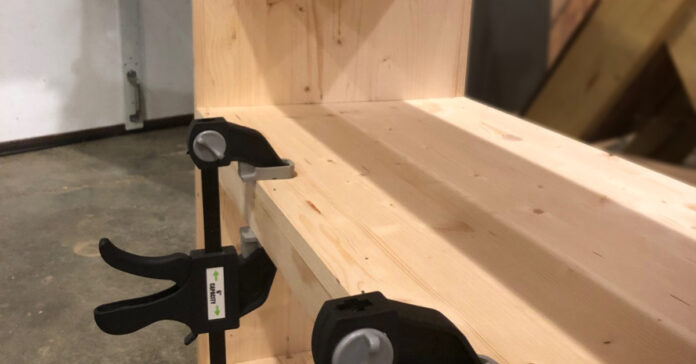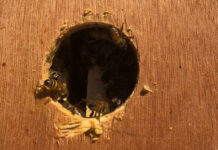This weekend, I built my wife a shelving unit to go into the closet in the laundry room. I have to give her credit; she has been very patient waiting for me to finish the henhouse and beehives. It was good that she waited, however, because that meant I got to use the tools and skills I polished working on those other projects.
In fact, as I was building the shelf, I could not help thinking that building it was like building a giant beehive. I had to keep the corners square, each piece had to be the correct length, and I used my recently acquired dado skills to cut rabbet joints. I even used the same wood glue I use on the beehives, Titebond III.
It turned out great! Don’t get me wrong, this is not an heirloom piece of furniture. After all, I built it in just a few hours over two days, using the bed of my pickup truck as a workbench. It’s going to be behind closed doors in a closet, filled with gallon jugs of laundry detergent, so it doesn’t have to be a work of art, but it turned out square, level and true, it is very sturdy, and it will definitely get the job done, probably for several decades.
Shelf Spacing
The shelf is 42 inches by 42 inches and has shelves that are 15, 14 and 13 inches tall, although if you subtract for the three-quarter-inch lumber, the actual space is less. We had planned on three shelves of 14 inches each, but we mixed them up, putting the largest at the bottom so we could fit large, bulky items in there.
My wife wanted the shelf 16 inches deep, which in my opinion is very deep indeed. I had to source special lumber for this, as the common lumber I could find tops out at a nominal 12 inches. We bought the lumber in February or March, before the height of the lumber price peak, but it still cost more than $100.
Best of all, this wasn’t made with cheap particle board and a veneer that will fall apart if you move it. I suggested we stain or polyurethane it, but she declined. Like I said, it’s going into a close. On the plus side, if the wood gets dirty, we can sand it clean and start afresh.
Building from Scratch
I’ve always been handy, able to repair things and make a quick fix, but I never built much from scratch. Maybe I was too busy. I didn’t even have the table saw and other tools set up until we moved into this house.
Since the move to our mountain homestead, I’ve been much more hands on, and I like it. I have the time to watch five videos and drill seven test holes to learn how to use Kreg Pocket Hole Jig. I can tackle larger projects without leaving in the middle on a business trip or being called away to put out a fire somewhere. With this new perspective, I can see why guys retreat to the shop and spend hours building something. It’s a different kind of productivity than I am used to.
For me, its also an element of self sufficiency. Being able to build from scratch means not needing to buy.
Just don’t ask me to produce any fancy furniture, swoopy chairs, or something that might be considered a work of art. I’m sticking with utilitarian.








